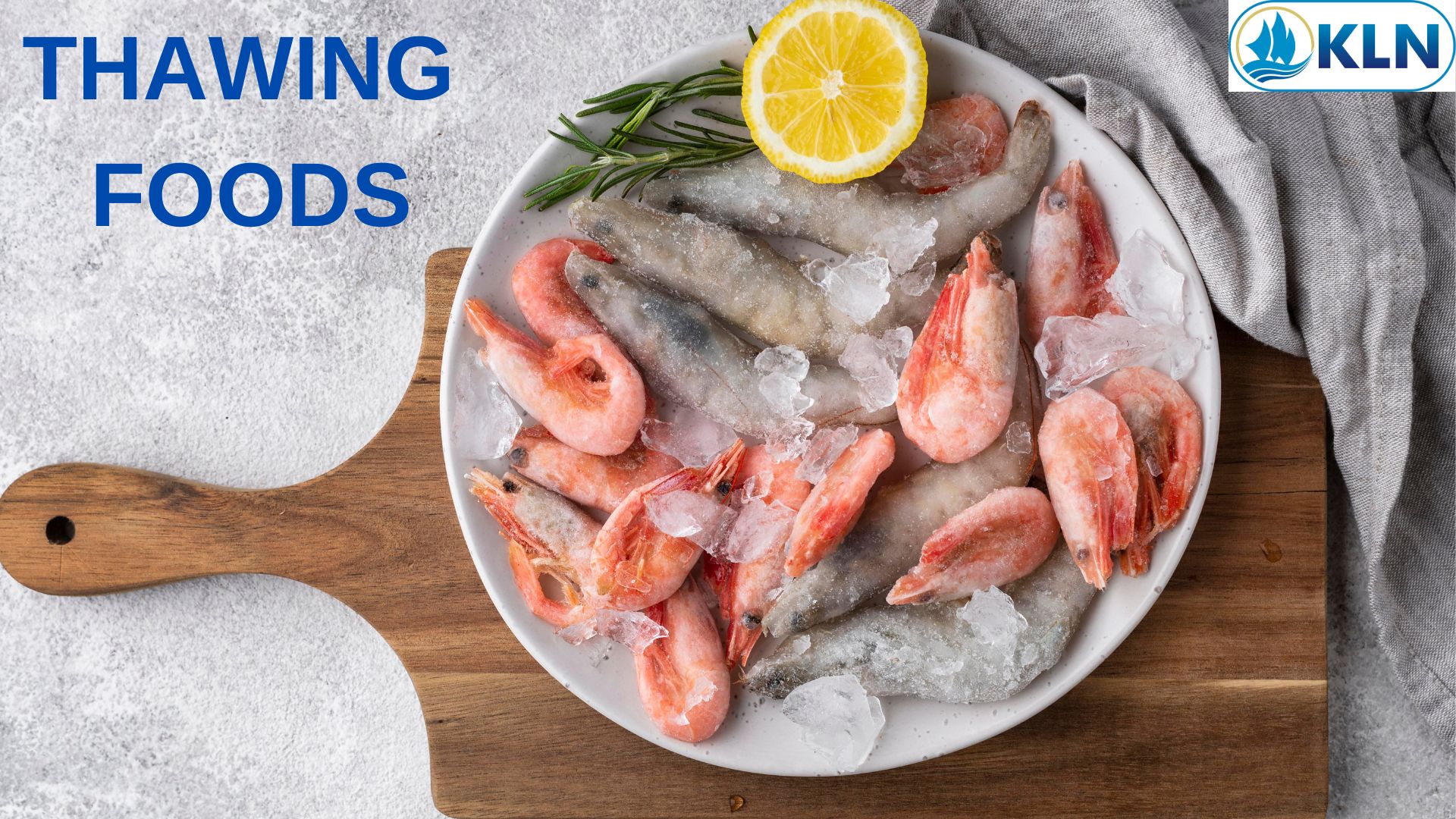THAWING FOODS
By. Najih - 06 Oct 2023
kelolalaut.com - Thawing foods is a critical control point to prevent risk of food poisoning. Food thawing refers to the process of melting the ice crystals formed on food as a result of freezing. Melting ice is done by placing the food at a higher temperature than the freezing point of water, which is 32°F. Because the rate of thawing ice is not equal throughout the food surface, some parts will thaw first before the rest, so bacteria can contaminate and spoil the food. Once food has been completely defrosted, don't re-freeze it. When freeze, thaw, and refreeze an item, the second thaw will break down even more cells, leaching out moisture, changing the integrity and quality of the product, and increasing bacteria.
There are three safe ways to defrost food: in the refrigerator, in cold water, and in the microwave.
1. Refrigerator Thawing
The safest way to defrost any food is in the refrigerator.
After thawing in the refrigerator, items such as ground meat, stew meat, poultry, seafood, should remain safe and good quality for an additional day or 2 to 5 days. Food thawed in the refrigerator can be refrozen without cooking, although there may be some loss of quality. Cook the meat as soon as it's defrosted.
2. Cold Water Thawing
This method is faster than refrigerator thawing but requires more attention. The food must be in a leak-proof package or plastic bag. If the bag leaks, bacteria from the air or surrounding environment could be introduced into the food. The bag should be submerged in cold tap water, changing the water every 30 minutes so it continues to thaw. Foods thawed by the cold water method should be cooked before refreezing.
3. Microwave Thawing
When thawing food in a microwave, plan to cook it immediately after thawing because some areas of the food may become warm and begin to cook during the thawing process. Before heating, remove the food from any packaging that's not microwave safe, such as:
- polystyrene trays
- plastic wraps that touch the food
- freezer cartons, such as cardboard boxes used for packaging








